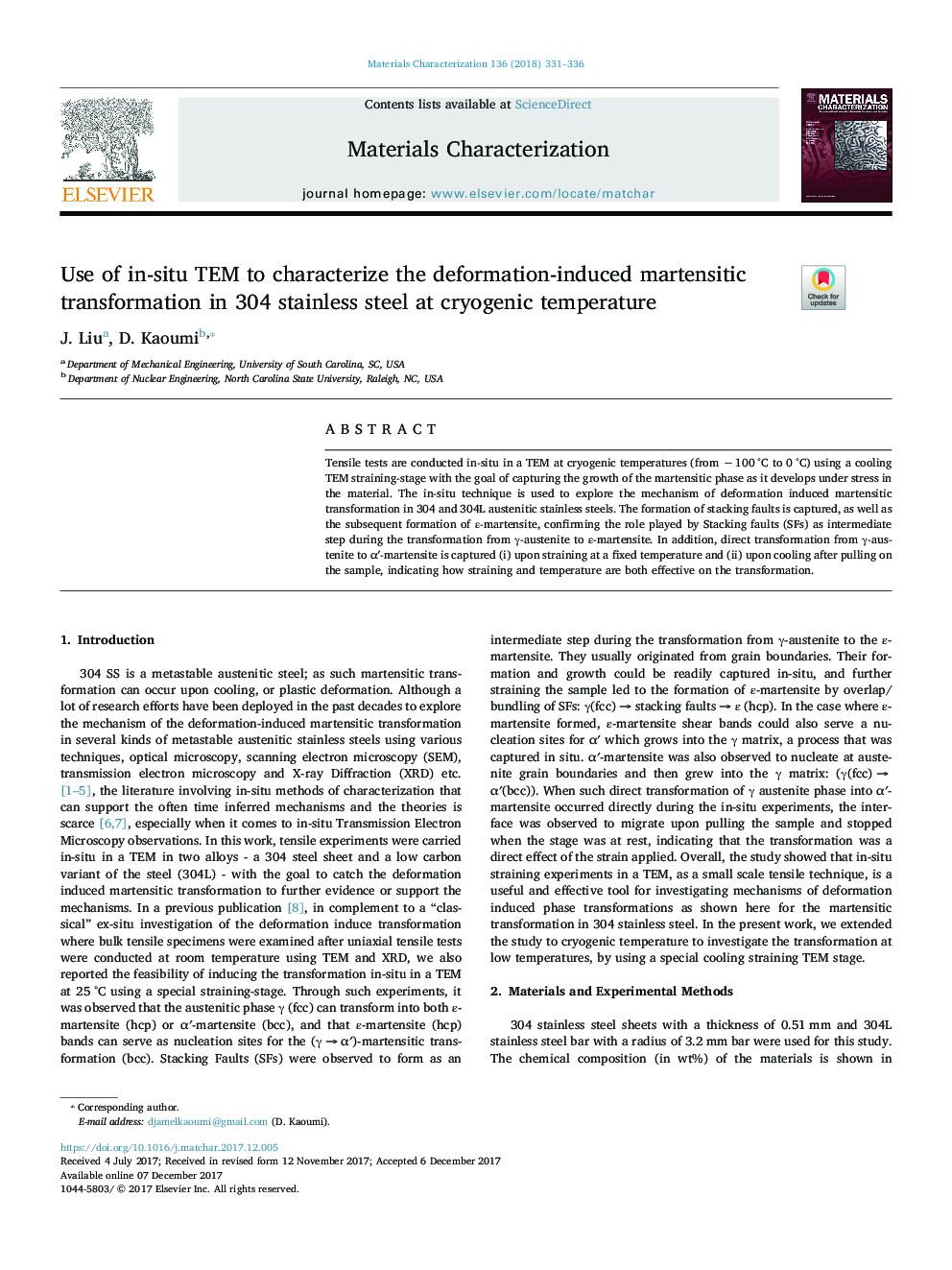| Article ID | Journal | Published Year | Pages | File Type |
|---|---|---|---|---|
| 7969509 | Materials Characterization | 2018 | 6 Pages |
Abstract
Tensile tests are conducted in-situ in a TEM at cryogenic temperatures (from â 100 °C to 0 °C) using a cooling TEM straining-stage with the goal of capturing the growth of the martensitic phase as it develops under stress in the material. The in-situ technique is used to explore the mechanism of deformation induced martensitic transformation in 304 and 304L austenitic stainless steels. The formation of stacking faults is captured, as well as the subsequent formation of ε-martensite, confirming the role played by Stacking faults (SFs) as intermediate step during the transformation from γ-austenite to ε-martensite. In addition, direct transformation from γ-austenite to αâ²-martensite is captured (i) upon straining at a fixed temperature and (ii) upon cooling after pulling on the sample, indicating how straining and temperature are both effective on the transformation.
Related Topics
Physical Sciences and Engineering
Materials Science
Materials Science (General)
Authors
J. Liu, D. Kaoumi,
